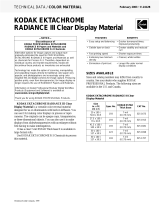Kodak 3925104 is a versatile and portable digital camera that empowers you to capture stunning moments with ease. Its exceptional features include:
-
4K Ultra HD video recording: Preserve your memories in breathtaking 4K resolution, ensuring sharp and vivid videos.
-
12-megapixel resolution: Capture crystal-clear images with remarkable detail and vibrant colors, perfect for printing or sharing online.
-
Optical image stabilization: Steady your shots and minimize blur, even in low-light conditions, resulting in sharper and clearer images.
-
2.7-inch LCD screen: Effortlessly compose, preview, and review your shots on the bright and clear LCD screen.
Kodak 3925104 is a versatile and portable digital camera that empowers you to capture stunning moments with ease. Its exceptional features include:
-
4K Ultra HD video recording: Preserve your memories in breathtaking 4K resolution, ensuring sharp and vivid videos.
-
12-megapixel resolution: Capture crystal-clear images with remarkable detail and vibrant colors, perfect for printing or sharing online.
-
Optical image stabilization: Steady your shots and minimize blur, even in low-light conditions, resulting in sharper and clearer images.
-
2.7-inch LCD screen: Effortlessly compose, preview, and review your shots on the bright and clear LCD screen.




-
 1
1
-
 2
2
-
 3
3
-
 4
4
Kodak 3925104 is a versatile and portable digital camera that empowers you to capture stunning moments with ease. Its exceptional features include:
-
4K Ultra HD video recording: Preserve your memories in breathtaking 4K resolution, ensuring sharp and vivid videos.
-
12-megapixel resolution: Capture crystal-clear images with remarkable detail and vibrant colors, perfect for printing or sharing online.
-
Optical image stabilization: Steady your shots and minimize blur, even in low-light conditions, resulting in sharper and clearer images.
-
2.7-inch LCD screen: Effortlessly compose, preview, and review your shots on the bright and clear LCD screen.
Ask a question and I''ll find the answer in the document
Finding information in a document is now easier with AI
Related papers
-
Kodak 400VC User manual
-
Kodak 3925120 Datasheet
-
Kodak 800 Technical Data Manual
-
Kodak ADVANTIX 400 Technical Data Manual
-
Kodak PROFESSIONAL BW400CN Film User manual
-
Kodak PROFESSIONAL HR 500 Plus User manual
-
Kodak P-255 User manual
-
Kodak 1133552 Datasheet
-
Kodak CIS-217 User manual
-
Kodak E-4028 User manual





